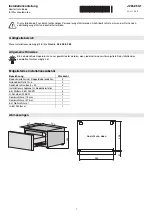
20
AQ-OP-00010_E
A pulse test as defined below can also provide a reliable approximation of round trip efficiency
from Vmin to Vmax at each rate.
In the energy efficiency test shown above, state of charge is set by a fixed ampere-hour (Ah) charge
determined as a specified percentage of the battery’s nominal capacity. A symmetric charge and
discharge pulse was then run for a fixed time (20 minutes) at each rate. At higher state of charge, the
pulse time may be limited by Vmax.
6.10 Battery Monitoring System (BMS)
Modules can be equipped with a voltage, current, and temperature sense board (VIS). The VIS
boards can then be daisy-chained together in a string of up to 16 Modules.
These strings then connect to a master BMS. Up to four parallel strings can be connected to each
BMS. A BMS is required if the Battery Module is configured in a parallel configuration of greater than
four Modules or any series configuration. The BMS communicates to the site controller via
MODbus/TCP as described in the BMS MODbus/TCP Communications Protocol Handout. Installation
and operations of the BMS is described in the BMS100 Operations Manual.
30
35
40
45
50
55
60
65
70
0
10
20
30
40
50
60
Voltage (V)
Vo
lt
ag
e
(V)
Test Time (h)
-120
-60
0
60
120
0
10
20
30
40
50
60
Current (A)
Cu
rr
en
t
(A
)
Test Time (h)














































